The Story of Titanic Survivor Violet Jessop
April 15 marks the anniversary of the sinking of the RMS Titanic. Every year the public’s imagination is captured by the infamous ship along with its harrowing stories of survival and loss. Amongst one of the crew was stewardess Violet Jessop, who would experience more than one maritime disaster in her lifetime. She remarkably survived not only the sinking of the Titanic, but also a second disaster at sea on the HMHS Britannic only a few years later.
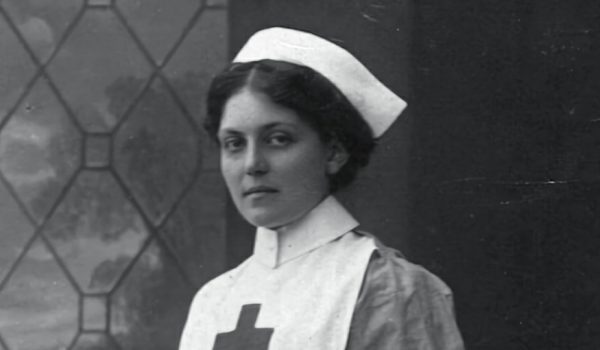
Image: Violet Jessop / Wikimedia Commons
Jessop was born on October 2, 1887 in Argentina to Irish immigrants William Jessop and Katherine Kelly. After the death of her father in 1903, the family moved to England. While her mother was working at sea as a stewardess, Jessop attended school and cared for her younger siblings. After her mother became ill, Jessop left school and followed in her mother’s footsteps to become a stewardess.
RMS Olympic
In 1911, Jessop began working for the White Start Line liner RMS Olympic. The Olympic was a luxury ship and the largest civilian liner at the time. Her time on the Olympic would mark her first encounter with dangers on the sea. On September 20, 1911, the Olympic left port at Southampton and collided with the British warship HMS Hawke. Fortunately, the accident resulted in no fatalities and the ship was able to return to port despite a gaping hole in her starboard quarter.
Boston Evening Record, September 20, 1911 / MyHeritage SuperSearch
RMS Titanic
Jessop continued to work aboard the Olympic until 1912 when she was transferred to her sister ship, the RMS Titanic, for her maiden voyage. In her memoir, Jessop described the night the vast ship collided with the iceberg and her realization that the “unsinkable ship” was going down into the ocean’s waters. When she first heard the crash, Jessop immediately went straight to her duties on deck to help passengers with their lifebelts and reassure them that everything was going to be fine. She helped usher passengers to the lifeboats as a “precautionary measure.” It wasn’t until she noticed the incline of the forward part of the ship that she realized the ship was actually sinking.
The Times Dispatch, April 16, 1912 / MyHeritage SuperSearch
Jessop boarded lifeboat 16 along with the other women and children. As the lifeboat was lowered, a deck officer handed her a “forgotten baby.” The stewardess cared for the child throughout the freezing night until they were rescued by the RMS Carpathia. She recalled in her memoir that as soon as she boarded the Carpathia, a woman ran up to her, grabbed the baby, and ran away with it.
Image: Titanic lifeboats on the way to Carpathia / Library of Congress
HMHS Britannic
Four years after the sinking of the Titanic, Jessop would endure yet another disaster at sea. During World War I, Jessop became a stewardess for the British Red Cross and worked aboard the HMHS Britannic, a sister ship to the Titanic, which was converted into a hospital ship. On the morning of November 21, 1916, Jessop was on board when the converted hospital ship was hit by a German mine. According to her memoir, Jessop quickly returned to her cabin to grab her most valued possessions along with one practical addition, her toothbrush. She recalled how after her rescue from the Titanic, she had a difficult time locating a toothbrush aboard the Carpathia. She was jokingly advised later, “Never undertake another disaster without first making sure of your toothbrush.”
When she reached the deck, she noticed that the propellers of the ship were still moving as lifeboats were lowered into the water. In a horrific scene, the boats were sucked into the propellers, killing those on board. As the ship continued to sink, Jessop realized she had no choice but to jump into the water. As she resurfaced, her head hit the ship’s keel. In her struggle to resurface, she was able to grab onto a spare lifebelt and hold on until one of the Britannic‘s boats was able to rescue her. Jessop had managed to survive yet another maritime disaster. The ship had gone down rapidly, sinking into the Aegean Sea in just 55 minutes. The blow to her head left Jessop with a badly fractured skull and she would suffer from headaches for years after.
The Evening Standard, November 22, 1916 / MyHeritage SuperSearch
Despite her experience at sea, Jessop returned to work for White Star Line in 1920 back aboard the Olympic. She later joined a new company, the Red Star Line, where she worked aboard the Belgenland.
Image: Violet Jessop on the RMS Olympic crew manifest arriving in New York, November 24, 1920 / MyHeritage SuperSearch
The rest of her career at sea was much less eventful and she eventually retired to the countryside. Jessop died on May 5, 1971 at the age of 83 in Suffolk, England.
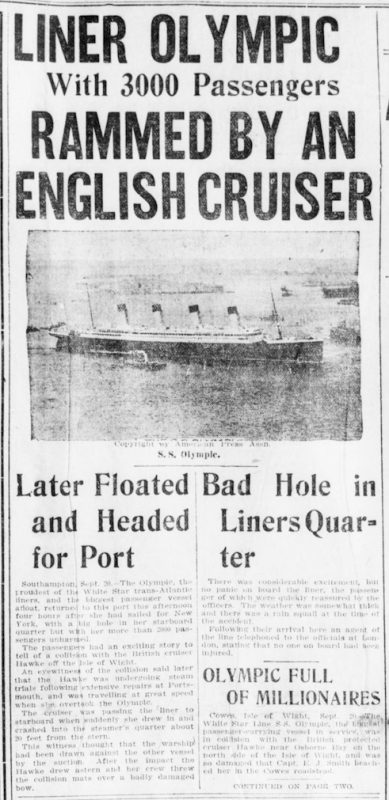
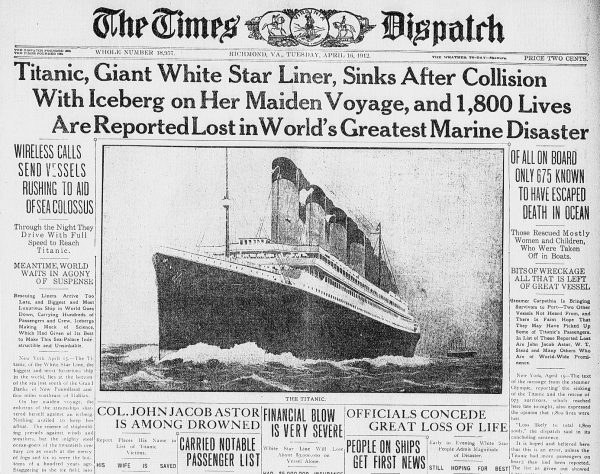
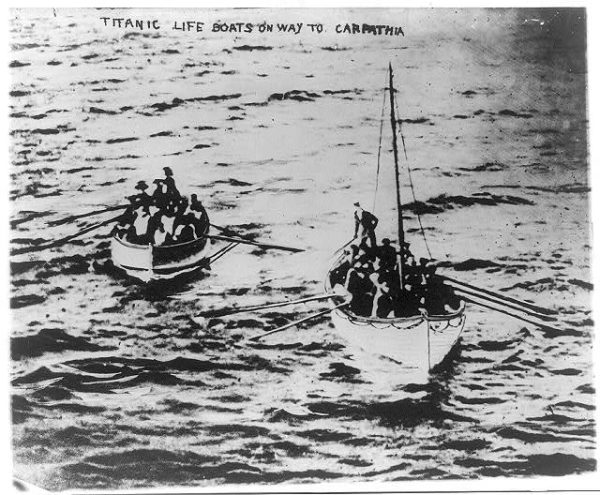
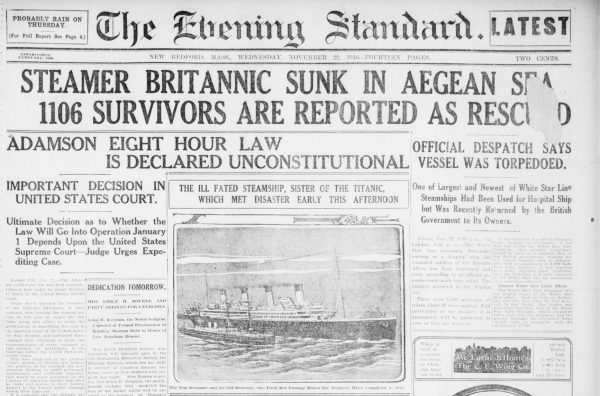
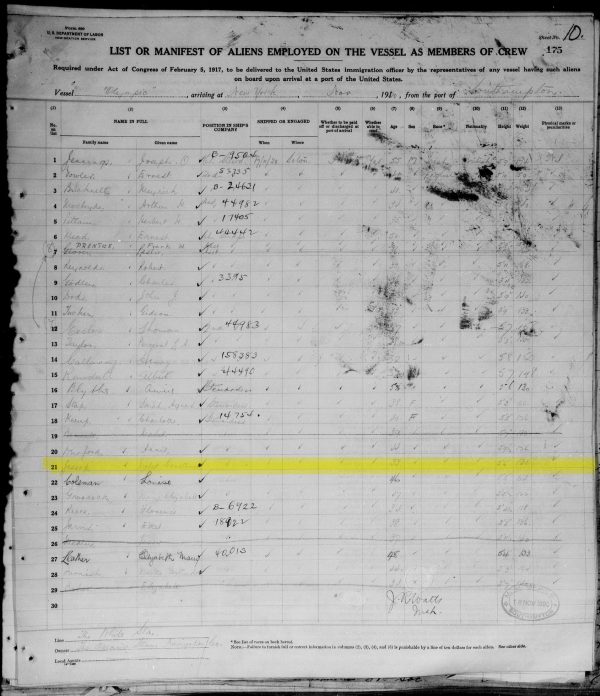







 Genealogy Discussions
Genealogy Discussions Genealogy Projects
Genealogy Projects Popular Genealogy Profiles
Popular Genealogy Profiles Surnames
Surnames The Geni Blog
The Geni Blog The World Family Tree
The World Family Tree